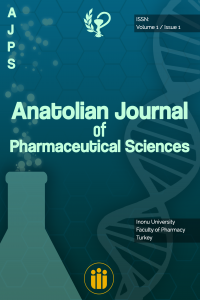Process Validation of Solid Oral Dosage Form of Ethambutol.HCl and Isoniazid Combination Tablet
Process Validation of Solid Oral Dosage Form of Ethambutol.HCl and Isoniazid Combination Tablet
The current study was designed to meet the current regulatory requirements and prove with assurance that, the product meets the predetermined specifications and quality attributes. The objective of the study was to systematically conduct the validation studies pertaining to the manufacturing activities of solid oral dosage form of tablet and to confirm that the product manufactured with the present method consistently meets the predetermined specifications and quality attributes. Concurrent process validation of manufacturing process of Ethambutol.HCl 800 mg and Isoniazid 300 mg combination tablet was being undertaken due to the addition of “Wet Milling” step for wet granulation. The purpose is to develop a proper design and a robust process along with tests for appropriate quality control checks which will lead to high quality product. Hence, the present work was carried out on the process validation of solid oral dosage form of the tablets. Present work was carried out on the process validation of solid oral dosage form of the tablets confirms that the observed sets of conditions are better suited for manufacturing.
Keywords:
Validation, Ethambutol, Isoniazid Oral dosage form, Tablet, Manufacturing,
___
- [1] Nash RA. Pharmaceutical Process Validation. Marcel Dekker, New York, 2003; 57: 13-23.
- [2] Sofer G, Zabriskie DW. Biopharmaceutical Process Validation.Marcel -Dekker, New York, 2000, 11.
- [3] Center for Drug Evaluation and Research. Guidance for Industry on General Principles and Practices of Process Validation. U.S. Food and DrugAdministration, Nov 2008, 1-16.
- [4] FDA Guidelines on General Principles of Process Validation. Division of Manufacturing and Product Quality. CDER, FDA, Rockville, MD, May 1987.
- [5] Guidelines on Process Validation. The European Agency for the Evaluation of Medicinal Products, March 2001.
- [6] WHO Expert Committee on Specifications for PharmaceuticalPreparations. WHO Technical Report. Series No. 863 – 34th report, Annex 6 – GMP: Guidelines on the Validation of Manufacturing. 2014, 4-7.
- [7] Jatto E, Okhamafe AD. An overview of Pharmaceutical validation and Process Controls in Drug Development. TropicalJournal of Pharmaceutical Research, 2002; 1(2): 117.
- [8] Frey G. Process Validation Guidance.4th APEC-Funded Seminar on Harmonization of Medical Device Regulation, Kuala Lumpur, 5-7 March 2008.
- [9] FDA. 21Code of Federal Regulations.Part 820, Good Manufacturing Practices for Medical Devices, April 1995.
- [10] FDA. Current Good Manufacturing Practices in Manufacture, Processing, Packaging and Holding of Human and Veterinary Drugs. Federal Register, U.S. Government Printing Office, Washington D.C. September 1978.
- [11] FDA. 21Code of Federal Regulations, Parts 210-211. Current Good Manufacturing Practice in Manufacturing, Processing, Packing, or Holding of Drugs, April 1995.
- [12] Validation Guidelines for Pharmaceutical Dosage Form. Health products and Food Branch Inspectorate, Canada, December: 2009, 8-13.
- [13] Loftus BT. Pharmaceutical Process Validation. 2nd edition, Marcel Dekker, New York, 1993, 1-7.
- [14] Helle M, Yliruusi J, Mannermaa J. A Literature Review of Pharmaceutical Process Validation. Pharmaceutical Technology, Europe, March, 2003, 4.
- [15] Sharp J. The problem of Process Validation. Pharmaceutical Journal, 1986; 236(1): 43-45.
- [16] Agallous JP. The other side of Process Validation. Journal of Parenteral Science and Technology, 1986; 40(6): 251-252.
- [17] Agallous JP. Validation: Yesterday, Today and Tomorrow. Proceedings of the PDA International Congress, February 22-24. 1993, Basel, Switzerland.
- [18] Agallous JP. Validation: An Unconventional Review and Reinvention. PDA Journal of Pharmaceutical Science & Technology, 1995; 49(3): 175-179.
- [19] Akers J. Simplifying and Improving Process Validation. Journal of Parenteral Science and Technology, 1993; 47: 281-284.
- [20] Anisfeld MH. Validation – How much can the world afford? Are we getting value for money? PDA Journal of Pharmaceutical Science and Technology, 1994; 48(1): 45-48.
- [21] Girault MJ. Validation – An Essential Tool in Quality Culture. S.T.P. Pharma Practiques, 1997; 7(5): 346-348.
- [22] Caubel D. Validation and Inspection: Future Trends. S.T.P. Pharma Practiques, 1997; 7(5): 378-382.
- [23] Kieffer RG. Validation & Human element. PDA Journal of Pharmaceutical Science and Technology,1998; 52(2): 52-54.
- [24] Kieffer RG. Global Trends, Needs, Issues. PDA Journal of Pharmaceutical Science and Technology, 1998; 52(4): 151-153.
- [25] O’Leary RM, Etcheverry T, Bezy P, Anicetti V, Burton LE. Use of Pilot Plant Facilities to Aid Validation Programs. PDA Journal of Pharmaceutical Science andTechnology, 2001; 55: 230-234.
- [26] Jatto E, Okhamafe A.D. An Overview of Pharmaceutical Validation & Process Controls in Drug Development. Tropical Journal of Pharmaceutical Research, 2002; 1(2): 115-122.
- [27] Government of India. Ministry of Health and Family Welfare. Indian Pharmacopoeia - 2007, The Indian Pharmacopoeia Commission. 2007, 2, 478.
- [28] Government of India. Ministry ofHealth and Family Welfare. Indian Pharmacopoeia – 2007, The Indian Pharmacopoeia Commission. 2007, 2, 629.
- Başlangıç: 2022
- Yayıncı: İnönü Üniversitesi
Sayıdaki Diğer Makaleler
A Review on Hypoglycemic Effects of the Urtica dioica L. and Punica granatum L. Plants
Development of Silica Nanoparticles as a Delivery System for Plasmid-Based Crispr/Cas9
Gozde ULTAV, Kubra MAC, Sena KİZİLBOGA, Vedat GUNDOGDU, Hayrettin TONBUL, Emine ŞALVA
Hakan DEMİRTAŞ, Kübra COŞAR, Mutlu ALTUNTAŞ
Dilek KAZICI, Ebru KUYUMCU SAVAN
Process Validation of Solid Oral Dosage Form of Ethambutol.HCl and Isoniazid Combination Tablet
